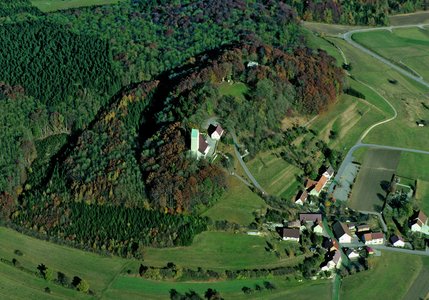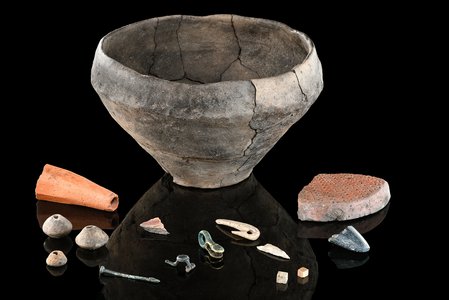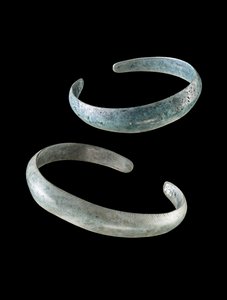Bussen - The Holy Mountain of Upper Swabia
The Bussen is a place with a long history. During the last ice age, massive glaciers surrounded the mountain, thus making it an imposing site which stood out in the landscape. Today the striking, landscape-defining Bussen, which rises to a maximum of 767m above sea level, is divided into three parts. In the southwest is a much-visited pilgrimage church, and the former sacristan's house. In the north-east are the remains of a castle with a lookout tower, whilst the central area is characterised by a meadow.
In addition to Bronze Age finds, pottery sherds from the Hallstatt period are also known from the Bussen’s slopes and the Bussen itself. Excavations carried out between 2019-2021 in a 3x6m section in the central area also yielded finds and features that attest to the use of the mountain in the Hallstatt period. The occurrence of a Hallstatt period house ground plan, from which a complete pottery vessel and a fragmented fibula came, are particularly noteworthy. Additionally, a very interesting collection of finds came to light in the form of two bronze arm rings, which were stuck almost vertically in the ground with the openings facing upwards. In terms of finds and features, this is probably a Bronze Age deposit or hoard for safe keeping.
While the Heuneburg functioned as a supra-regional centre in the Middle Bronze Age and the early Urnfield Period (1600-1100BC), and especially in the Late Hallstatt Period between 620 and 450BC, the Bussen seems to have been important from the developed Urnfield Period until around 620BC. This is also shown by finds from a burial ground near Unlingen, which were discovered about 3.5km northwest of the mountain during construction work in 2016. Of particular note is a bronze equestrian statuette on a two-headed horse, recovered from a chariot grave dated to around 700BC. Thus, for the metal ages, an interesting interplay between the Bussen and the Heuneburg, 13km away, is starting to emerge.
References: Hansen u. a. 2020b.




